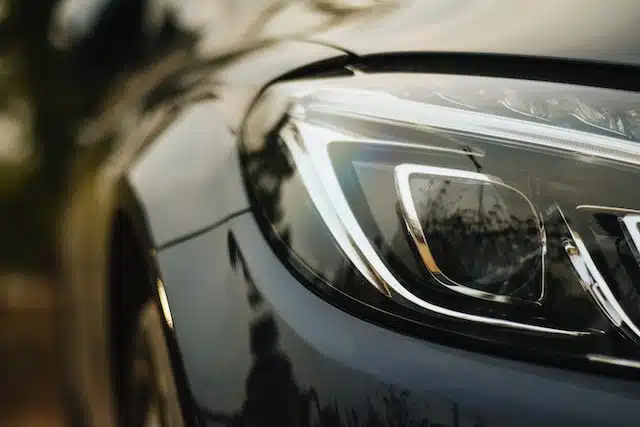
Headlights, an indispensable part of your vehicle, play a crucial role in ensuring safety and compliance with regulations while on the road. Their primary function is to illuminate the road ahead, particularly in low-light conditions and adverse weather. But did you know that all headlights are not created equal? That’s right! There are various headlight types available in the market, each with its unique set of features, pros, and cons. This guide will delve into the world of headlight technology, shedding light on why headlights are essential and exploring the different types of headlights you can choose from for your vehicle.
Headlight Types: Main Takeaways
| Type | Key Characteristics | Pros and Cons |
|---|---|---|
| Halogen Headlights | Affordable, tungsten filament, halogen gas, warm light, color temperature ~3000K | Pros: Cost-effective, easy to replace. Cons: Short lifespan (450-1,000 hours), significant heat generation, yellowish light. |
| LED Headlights | Energy-efficient, long-lasting (10,000-30,000 hours), compact, white light, requires heat sink | Pros: Energy-efficient, long lifespan. Cons: Higher initial cost, requires heat management. |
| HID/Xenon Headlights | Bright light, color temperature 4000-6000K, contains xenon and argon gases | Pros: Bright, wide illumination range. Cons: Delay in reaching full brightness, potential glare, lifespan of 2,000-10,000 hours. |
| Laser Headlights | Latest technology, chemiluminescence, extremely bright, energy-efficient | Pros: Exceptional efficiency and brightness. Cons: Extremely expensive, still rare in vehicles. |
Headlight Systems and Colors
| System Type | Description | Pros and Cons |
|---|---|---|
| Reflector Headlights | Uses parabolic reflector to amplify light | Pros: Compact, less expensive. Cons: Uneven light output, potential for dark spots. |
| Projector Headlights | Lens in front of light source, magnifies brightness | Pros: Bright, even light output, glare reduction for oncoming drivers. Cons: More expensive, complex design. |
| Light Color | Description | Pros and Cons |
|---|---|---|
| Yellow Light | Filters blue tones, softer on eyes, effective in poor weather | Pros: Reduced glare, better visibility in fog. Cons: Less common, may be perceived as outdated. |
| White Light | Full spectrum, appears brighter, modern look | Pros: Modern, improved visibility in clear conditions. Cons: Can be blinding, less effective in fog/snow. |
The Crucial Role of Headlights

Headlights serve a dual purpose: they allow drivers to see and be seen. This dual function is why having properly functioning headlights is critical to road safety. Optimal visibility during nighttime or difficult weather conditions can help prevent accidents and ensure smooth navigation. Conversely, malfunctioning or inadequate headlights can compromise safety and even result in traffic violations. Therefore, knowing the different headlight types and their unique properties can assist you in making an informed decision when it’s time to replace or upgrade your vehicle’s headlights.
Navigating Through the Headlight Types

The automotive market offers a plethora of headlight types, the most common being Halogen, High-Intensity Discharge (HID), LED, and Laser. Each headlight type utilizes different technologies and materials to produce light, resulting in varied brightness, lifespan, cost, and energy efficiency. Let’s delve into the specifics of each.
Halogen Headlights
Halogen headlights are arguably the most commonly used headlight type in vehicles. They are the most affordable and easy to replace, making them a popular choice among car owners.
The lighting mechanism in halogen headlights involves a filament, typically made of tungsten, enclosed within a glass envelope filled with inert gas and a small amount of a halogen gas such as iodine or bromine. The reaction between the tungsten and halogen gases allows these bulbs to emit bright, warm light.
However, halogen bulbs generate a significant amount of heat and have a relatively short lifespan that ranges between 450 to 1,000 hours. The yellowish hue of their light measures around 3,000 Kelvin on the color temperature scale.
LED Headlights
LED (Light-Emitting Diode) headlights are becoming increasingly popular due to their energy efficiency and durability. These headlights function through a process called electroluminescence, where electrons are fired towards positively charged holes in a semiconductor, releasing energy as light particles or photons.
LED bulbs are compact, allowing manufacturers to design sleeker and more flexible headlight assemblies. They are also known for their longevity, with a typical lifespan ranging between 10,000 to 30,000 hours. However, the cost of LED headlights is higher than halogen counterparts, mainly due to the required heat sink to prevent overheating.
HID or Xenon Headlights
High-Intensity Discharge or HID headlights, often known as Xenon headlights, are commonly installed in high-end vehicles. They emit an extremely bright light due to a combination of xenon and argon gases mixed with vaporized metals. This powerful light output, which ranges between 4,000 to 6,000 Kelvin, provides a greater illumination range.
On the downside, HID headlights have a delay before reaching maximum output and can sometimes be too bright, potentially blinding oncoming drivers. These headlights have a lifespan that can extend from 2,000 to 10,000 hours.
Laser Headlights
Laser headlights represent the latest innovation in automotive lighting technology. These headlights produce light through chemiluminescence, a process in which a chemical reaction triggers light emission. Laser headlights are exceptionally efficient, producing brighter light while consuming less energy than LED bulbs. However, they are also the most expensive headlight type, costing thousands of dollars.
Headlight Systems: Reflector vs. Projector
Apart from the types of bulbs, headlights can also be categorized into two system types: reflector and projector systems.
Reflector Headlights
Reflector headlights utilize a parabolic reflector that amplifies the light and directs it through a lens. They are more compact and typically cost less than projector headlights. However, they may produce uneven light output and create dark spots.
Projector Headlights
Projector headlights, on the other hand, have a lens in front of the light source that magnifies the brightness of the headlight. They produce a brighter and more even light output. They are also equipped with a cutoff shield that directs the light beam toward the road, preventing oncoming drivers from being blinded by the glare.
Headlight Colors: White vs. Yellow
Headlight bulbs can emit different colors, usually white or yellow. The choice between white or yellow headlights is subjective and depends on the driver’s preferences.
Yellow Light
Yellow light helps filter out blue tones, making it softer on the eyes than white light. It can cut through rain, fog, and snow more effectively than white light. However, under clear conditions, visibility with yellow light may be difficult.
White Light
White light mimics sunlight, enhancing road visibility. In some countries, white light is the only acceptable headlight color.
In Conclusion
Understanding the various headlight types can help you make an informed decision when it’s time to replace or upgrade your vehicle’s headlights. Whether you prefer the cost-effectiveness of halogen bulbs, the brightness of HID headlights, the energy efficiency of LED lights, or the advanced technology of laser headlights, the choice ultimately depends on your vehicle’s compatibility, your budget, and your specific requirements. Drive safe and let your journey be well-lit!


